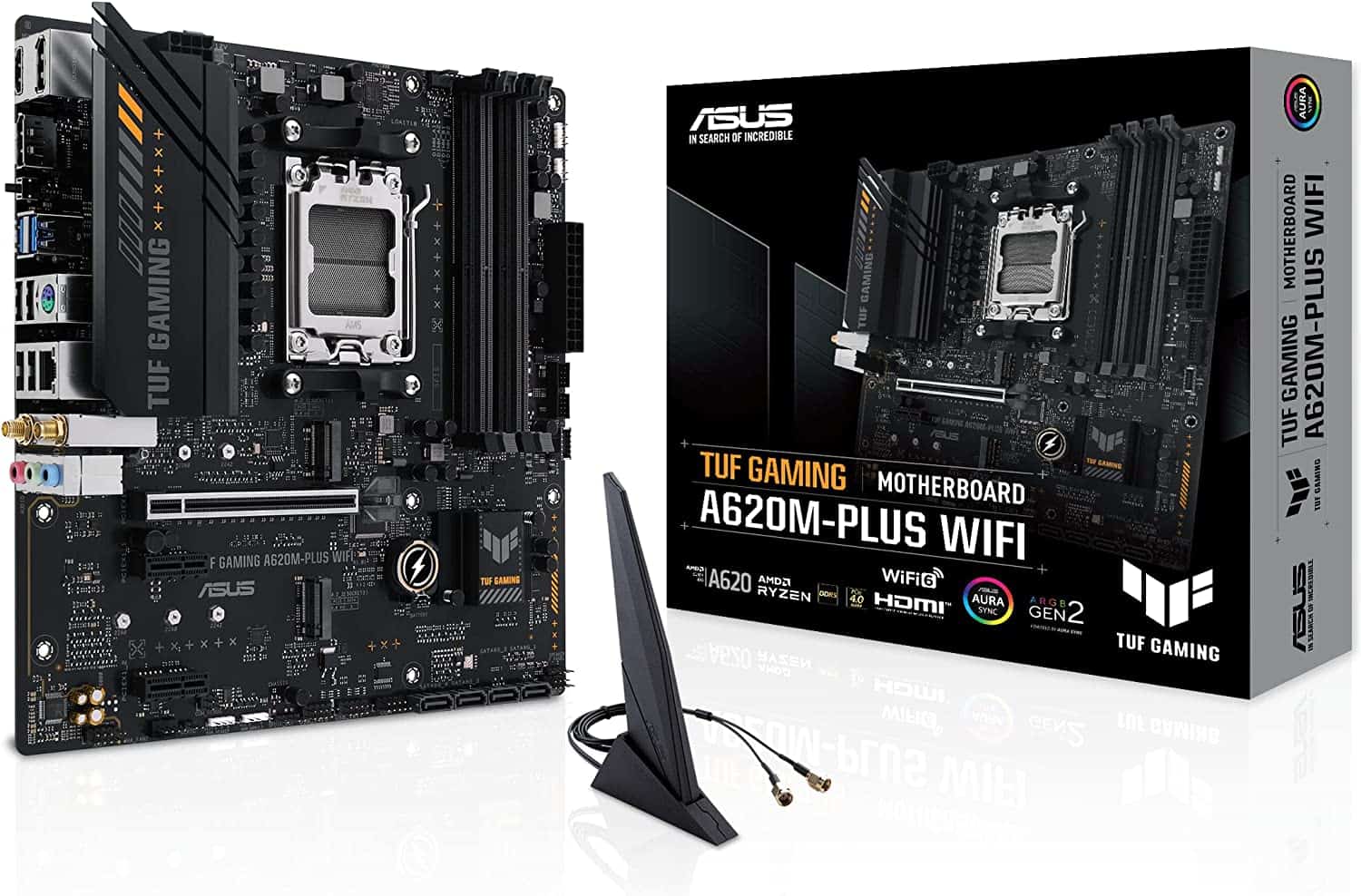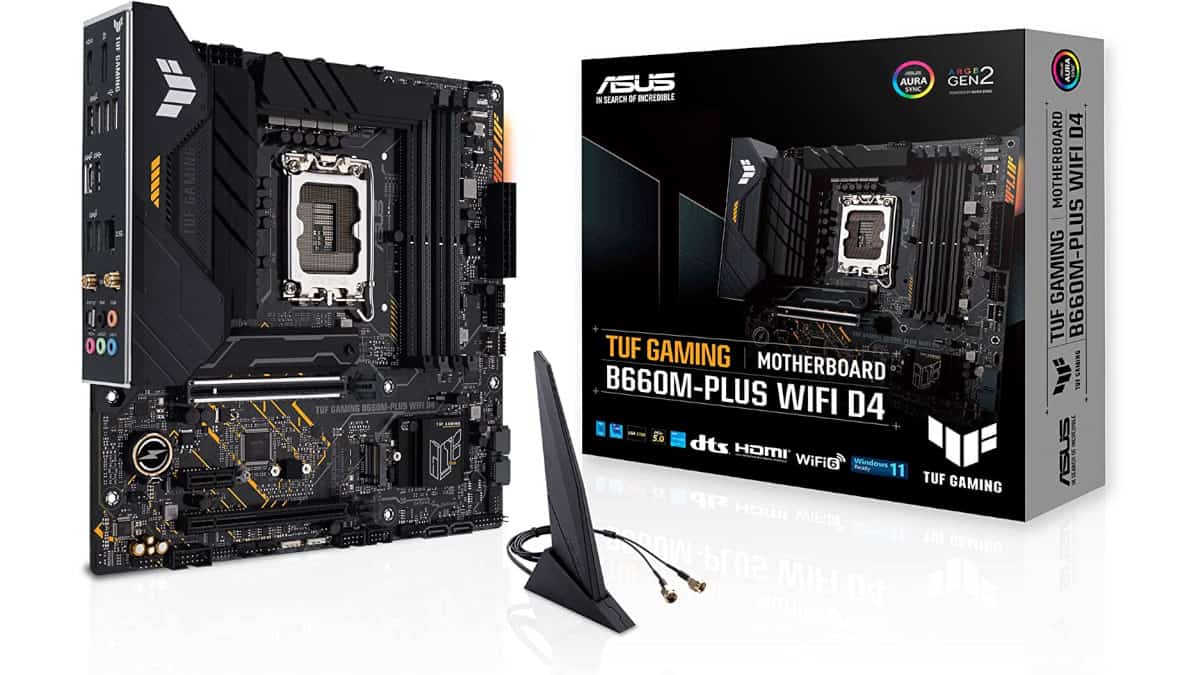AMD A620 vs B660

Table of Contents
If you are looking for a new chipset for your computer, you might be overwhelmed by the many choices available on the market. One of the most important decisions you have to make is whether to go for an AMD A620 or B660 chipset. But what are the main differences between them and which one is better suited for your needs? Let’s find out.
AMD A620 vs B660: Specs
Comparing the two chipsets, the AMD A620 is aimed at entry-level and low-cost motherboards. While the Intel B660 targets mid-range motherboards.
The A620 chipset offers more PCIe Gen 4 lanes from the CPU (28 lanes), compared to the Intel B660 (20 lanes). However, the B660 chipset provides more USB connectivity options, with support for USB 3.2 Gen 2×2 20Gbps ports, whereas the A620 does not.
The Intel B660 chipset supports CPU and memory overclocking on K-series processors, while the AMD A620 chipset does not support CPU overclocking but does offer memory overclocking.
Both chipsets support DDR5 memory, but the B660 also supports DDR4, depending on the specific motherboard model.
| A620 | B660 | |
| Motherboard compatibility | AM5 | LGA 1700 |
| PCIe lanes (from CPU) | 28 PCIe Gen 4 | 20 PCIe Gen 4 |
| PCIe lanes (from PCH) | 8 PCIe Gen 3 | 12 PCIe Gen 3 |
| USB 3.2 Gen 2×2 ports | 0 | Up to 6 |
| USB 3.2 Gen 2 ports | 2 | Up to 10 |
| USB 3.1 Gen 2 ports | 2 | – |
| USB 2.0 ports | 6 | – |
| DDR memory support | DDR5 | DDR4 and DDR5 (depending on the model) |
| Form factor | mATX/ITX | ATX/mATX/ITX |
Overall, the choice between the AMD A620 and Intel B660 chipsets depends on your budget, performance requirements, and whether you prefer an AMD or Intel platform.
The AMD A620 is more suited to entry-level systems with a focus on cost-effectiveness. While the Intel B660 is aimed at mid-range systems that require more features and connectivity options.
AMD A620 vs B660: Performance
In terms of performance, the AMD A620 and Intel B660 chipsets cater to different market segments. The AMD A620 is designed for entry-level systems, focusing on providing basic functionality and cost-effectiveness.
It offers more PCIe Gen 4 lanes from the CPU (28) compared to the Intel B660 (20), which could potentially result in better performance for certain tasks. However, the lack of CPU overclocking support and limited USB connectivity might restrict the A620’s overall performance potential.
The Intel B660 is targeted at mid-range systems and offers a wider range of features and connectivity options. With support for CPU and memory overclocking on K-series processors, the B660 chipset can potentially deliver better performance for enthusiasts and gamers.
The B660 also provides more extensive USB connectivity. Including USB 3.2 Gen 2×2 20Gbps ports, which could benefit users with high-speed peripherals.
Ultimately, the performance of a system built around these chipsets depends on various factors, such as the specific CPU, GPU, and memory components used. In general, the AMD A620 is better suited for budget-conscious users seeking basic functionality, while the Intel B660 is more appropriate for mid-range systems that require additional features and better performance potential.
AMD A620 vs B660: Price
The AMD A620 chipset is targeting a lower price segment than the Intel B660 chipset. The A620-based motherboards are expected to start at $85, making them more accessible for budget-conscious users who don’t require advanced features.
In contrast, the Intel B660 motherboards’ prices range from $99.99 up to $239.99, depending on the specific model and its features.
While still targeting the mid-range market segment, these motherboards cater to users who want more advanced options and features compared to entry-level offerings but without paying a premium for high-end features.
In summary, the AMD A620 motherboards offer more affordable options for budget-conscious consumers, while the Intel B660 motherboards provide a balance between price, performance, and features for users in the mid-range market segment.
Keep in mind that prices may vary depending on the brand, model, and region, so it’s essential to check the latest prices from your preferred retailer when making your decision.
AMD A620 vs B660: Conclusion
In conclusion, when comparing the Intel B660 and AMD A620 chipsets, both cater to different market segments. The AMD A620 chipset targets entry-level and budget-conscious consumers, offering a more affordable solution without advanced features.
On the other hand, the Intel B660 chipset aims at the mid-range market segment, providing a balance between price, performance, and features for users who want more advanced options without breaking the bank.
Ultimately, your choice between the two chipsets will depend on your specific needs, budget, and preferences. If you’re on a tight budget and don’t require advanced features, the AMD A620 chipset might be a better fit.
However, if you want a more feature-rich option while still maintaining a reasonable price point, the Intel B660 chipset would be the better choice.
- NOW READ AMD A620 vs X670 motherboards


